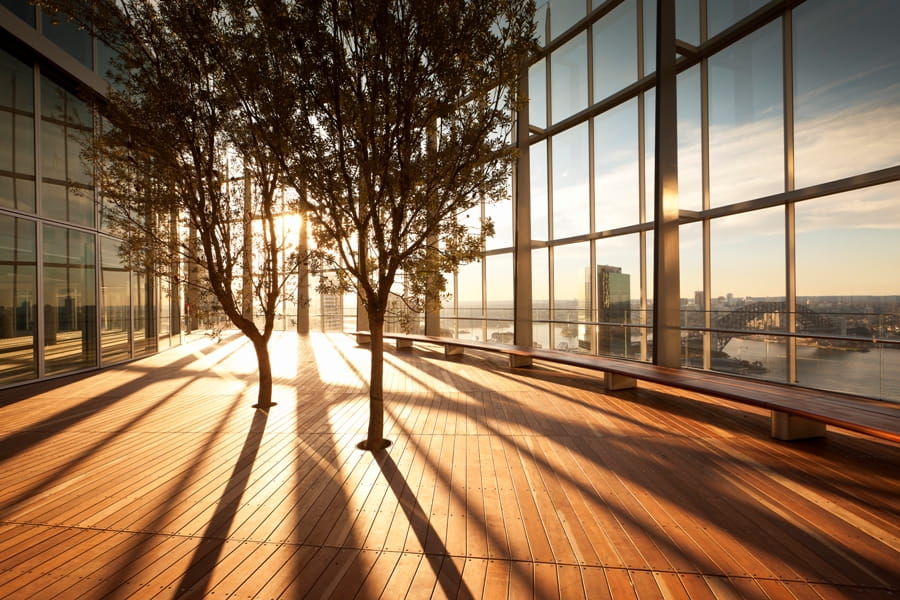Once again, someone takes a pot shot at glass as the great
Satan in building energy efficiency, and once again the glass industry huffs
and puffs that there is more to architecture than living in an insulated
box. The two articles are worth reading.
- Climate change means we can't keep living (and working) in glass houses by David Coley appeared first in The Conversation. Coley is Professor of Low Carbon Design and head of the Energy and the Design of Environments research centre at the University of Bath .
- Why glass matters in sustainable design: Viridian’s assertive response to David Coley’s article is journalist Nathan Johnson’s piece in Architecture and Design, channelling the response of Australia’s only manufacturer of float glass and most advanced glazing for buildings.
To put it simply, as Johnson does, Coley argues that a true
commitment to sustainable design from architects would involve the reduction of
glazing on buildings, because glass is a poor insulator and highly glazed
buildings require a unsustainable level of mechanical heating or cooling.
The glass industry responds with an emotional throwback to the 1920s, inviting us to consider ‘light filled, comfortable, better quality spaces with an enhanced connection with nature’. And go on to suggest that “the change that needs to occur lies in the hands of the designer, who must play a role in ensuring better building environments – designing more buildings, with more glass, that have exceptional energy efficiency performance.”
Indeed. We should
definitely have this discussion. But
quite frankly, it won’t happen unless we lift the quality of the information. Both Coley's article and Viridian's response
are at about the level of technical sophistication of a dinner table
conversation. Which is not surprising, because most contemporary architects'
understanding of the technical issues is arguably about the same.
The problem isn't whether Coley or Viridian is correct. In
fact they are both right, as far as they go in their very limited discussion of
the issue of glass, buildings and climate change.
Any complete discussion of glass would include for instance,
the fact that not all of the glass curtain wall is actually a window. Where optical
transparency is not an issue, glass can be backed by extremely efficient
insulation. Such a wall can far outperform the heat transmission
characteristics of traditional wall assemblies. This is highly relevant when
discussing building types such as high-rise commercial office towers, which
simply did not exist when traditional construction methods evolved in response
to different climates.
If we extended just that one simple example into a broader
discussion of sustainability, we would acknowledge that:
- glass wall assemblies are really easy to disassemble and recycle or repurpose,
- glass is chosen as a cladding as much is for any other reason, because it is easier to maintain, and
- glass is an excellent substrate for emerging thin film photovoltaics that can contribute to turning a building into an net energy exporter – especially if the energy demand is suitably reduced by appropriately designing for daylight autonomy.
So why doesn’t the technical information better inform the conversation
about such an important aspect of contemporary architecture? Anyone who reads my blog would know that I
ask this question repeatedly. As always,
at least part of the answer lies in the nature of online media.
The Conversation is an online
information and commentary site run by Australian and British universities,
with a banner claiming 'academic rigour, journalistic flair.' A noble mission, but one which ends up a strange
hybrid between pop vox and academics trying to explain the world to the hoi
polloi. Dumbed down, dumbed down. I gave up writing for The Conversation after my first
attempt, which collected an avalanche of trolls.
Architecture and Design is a trade rag, excellent value as an aggregator of news and views,
helping the harried design professional trying to keep up with what’s happening,
at least in Australia. But with the
poverty of technically qualified editorial staff characteristic of such sites,
one should be more surprised at the occasional excellent opinion piece, rather than
hard on them for the journalistic waffle.
I am sure I will fulminate against both of them again in the
future, and I wish I knew the solution to the problem. I don’t.

No comments:
Post a Comment